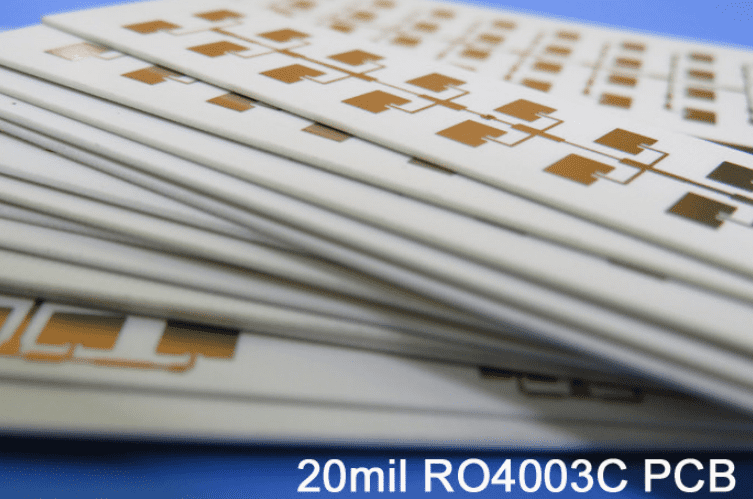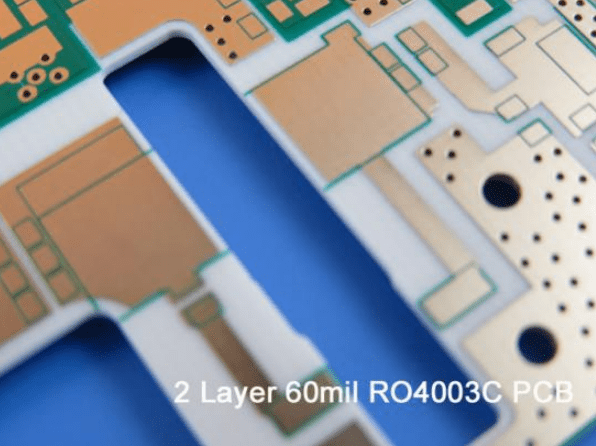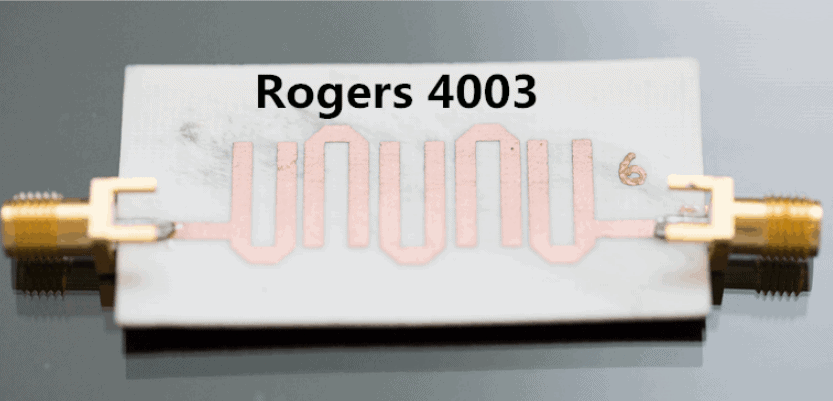Some circuit board laminates prove to be a “toughie” in the sense that they are usually hard to configure or work with. At the same time, there are a couple of circuit materials or laminates that are one of the best you can work with. The Rogers 4003 falls into the latter category.
Why is Rogers 4003 an “Easy-to-Use Laminate”?
There are a couple of reasons why we believe that the properties of the Rogers 4003 circuit laminate/material are better off than those of the other circuit materials.
The most outstanding between the Rogers 4003 and the other circuit laminates is that the usage is not complicated, especially when you consider that it doesn’t require special handling or through-hole treatments, unlike the PTFE-based microwave materials do.

The other upside to the Rogers 4003 laminate is the increased cost-saving, as it allows for the utilization of the same processing method as the standard epoxy/glass, only that it saves costs.
Referencing Guide for the Rogers 4003 Laminate
Before working with Rogers 4003, here are is a quick rundown of some of the things you need to know about the processing:
Bonding Procedures
Rogers 4003 works best with the Rogers 4400 series of bond-piles. You can also use some of the common thermostat prepregs for the bonding.
However, note that for the multilayer bond cycle, it is expedient to use the bond parameters that are associated with the adhesive system.
The final preparation should be a pre-baking of the laminate between 125˚C and 150˚C.
Rogers 4003 vs. Other PCB Laminates
It is not out of place to compare what the Rogers 4003 laminate offers with what you tend to see from the other circuit materials. One of the major comparisons is between the Rogers 4003 and the FR4 material.
Here is how the Rogers 4003 differs from the FR4 material, and indeed, other standard circuit board materials:
The Frequency Matters
The frequency of the Rogers 4003 is one of the most important elements. When compared to the FR4 material, the frequency tends to exceed, and that is why it is primarily used with high-frequency applications.

Absorption Rate
Absorption, in terms of the circuit materials, has to do with the ability of those materials to keep functioning optimally, despite being exposed to certain conditions.
It is common to find the FR4 and standard circuit materials’ absorption rate between 0.01% and 0.20%.
The relevance of the absorption is that it goes a long way to keep the circuit free even when exposed to liquid. That is why the Rogers 4003 towers over the FR4 material, because of the smaller absorption value.
The low absorption rate is a major reason why the Rogers 4003 circuit material is used with the applications that are typically exposed to unstable environments, such as the aerospace and defense systems.
Advantages of the Rogers 4003 PCB Material
Besides the lower absorption value, the Rogers 4003 also has a couple of other upsides. These are the extra benefits that come with it:
Optimized for Higher Applications
Rogers 4003 is ideally used with the applications or devices that require a higher performance. It is also used with the high-volume applications.

Multilayer PCB Support
Rogers 4003 is also ideally used with the Multi-Layer Board (MLB) constructions.
Affordability
If you’ve always wanted to save money working with a PCB material or laminate, a better option should be Rogers 4003. When compared to the FR4 material, it offers a significantly lower fabrication cost.
Overall Performance of the RO4000 Materials
Rogers 4003 belongs to the broader range of laminates and circuit materials categorized under the RO4000. Thus, we want to dim the spotlight on how these materials are generally optimized to work.
Going by the information on the datasheet, the RO4000 materials cover both the R04003C and the RO4350B. These materials are high-frequency and can be fabricated using the standard epoxy/glass (FR4) processes – albeit, at a lower fabrication cost.
Below are the overall features and benefits of the RO4000 circuit materials:
Stabilized Electrical Properties
Rogers 4003 features stable electrical properties and frequency. To this, it offers both the repetition of the design filters and the controlled impedance transmission lines.
Low Loss Capabilities
The RO4000 series of circuit materials are popular for managing the loss of signals to a greater extent.
First, these materials are ideal for a broad range of applications, including the broadband applications.
Second, you can use the low dielectric tolerance and low loss feature of the Rogers 4003 to get the most electrical performances out of it.
Last but not least of the low loss capabilities is that the Rogers 4003 materials are compatible with the applications that operate at a higher frequency.
About the Manufacturer of the Rogers 4003 Circuit Materials
Rogers is the company that makes the Rogers 4003 and many of the other circuit materials broadly categorized under the RO4000 series. The company has been in the business for a couple of years and has made a name in the market as a leading producer of RF circuit boards and high-performance Printed Circuit Boards (PCBs).
Rogers also engages in the production of circuit board materials that offer a combination of improved performan
ce, low losses for the signal transmissions and cost-effectiveness. It is also to be noted that the range of PCB laminates from the company often come with low electrical noise optimizations.

Important Information About Rogers’ Circuit Material Capabilities
Besides the aforementioned capabilities ranging from low noise and affordability, Rogers’ circuit board materials also have a couple of other outstanding characteristics. These include:
Multi-Stackup
The stackup of the Rogers PCB materials typically includes two cores and a prepreg material. However, it is common for the core to carry the top two (2) layers of the copper, while the rest will be in the form of the standard, FR4 material.
Conclusion
Generally, the Rogers 4003 circuit material is ideal for high-frequency applications, especially the applications in the telecommunications, military, automobile, aerospace and defense industries.
Comments are closed